List of equipment of the Armed Forces of Urcea
This article is a work-in-progress because it is incomplete and pending further input from an author. Note: The contents of this article are not considered canonical and may be inaccurate. Please comment on this article's talk page to share your input, comments and questions. |
The equipment of the Armed Forces of the Apostolic Kingdom of Urcea includes, but is not limited to, weapons, ammunition, vehicles, and attire.
Infantry weapons
Muskets and rifles
| Name | Type | Caliber | Branches | Years in service | Notes | Picture |
|---|---|---|---|---|---|---|
| Continental Pattern Service Musket | Musket | 0.75 inch ball | Royal and Imperial Army | 1722-1840 | First standardized weapon in use by the Royal and Imperial Army | 
|
| Model 1840 Service Weapon | Musket | 0.69 inch ball | Royal Army, Royal Navy | 1840-1862 | Last smoothbore musket in use
First purpose-built percussion cap weapon in use |
|
| Model 1862 Service Weapon | Rifled musket | 0.58 inch Minié ball | Royal Army, Royal Navy | 1862-1874 | First purpose-built standard rifle | 
|
| Model 1874 Service Weapon/SR-1 | Breech loading rifle | .45-70 | Royal Army, Royal Navy | 1874-1887 | First non-muzzle loading standardized weapon
First standardized cartridge small arms weapon Reclassified as SRM-1 following 1880 equipment designation standardization |

|
| SR-2 | Bolt-action rifle | .308 Regal | Royal Army | 1881-1882 | First bolt-action rifle issued
Limited use/production |

|
| SR-3 | Bolt-action rifle | .308 Regal | Royal Army | 1882 | Limited use/production; licensed from Yonderre | 
|
| SR-4 | Lever action rifle | .308 Regal | Royal Army | 1883-1890 | Only lever action rifle issued to the infantry on a limited basis
Pulled from infantry use in 1883; remained in cavalry use until 1890 |
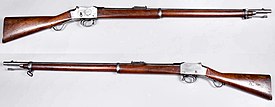
|
| SR-5 | Bolt-action rifle | .308 Regal | Royal Army | 1884 | Limited use/production | 
|
| SR-6 | Bolt-action rifle | .308 Regal | Royal Army | 1884-1885 | Limited use/production; design adapted from Burgundie without permission | 
|
| SR-7 | Bolt-action rifle | .308 Regal | Royal Army, Royal Navy | 1885-1887 | Limited use/production; remained in Navy use until 1890 | 
|
| SR-8 | Bolt-action rifle | .308 Regal | Royal Army, Royal Navy | 1887-1903 | Licensed from Veltorina; adopted by the Navy in 1890 | 
|
| SRM-9 | Bolt-action rifle | .324 Royal | Royal Army, Royal Navy, Royal Air Force | 1903-1925 | Remained in limited service as a sniper rifle until 1945 | 
|
| SRM-9C | Bolt-action rifle | .324 Royal | Royal and Imperial Army, Royal Navy, Royal Air Force | 1925-1937 | Remained in Royal Navy service until 1945;
in current ceremonial service |

|
| SR-10 | Semi-automatic rifle | .308 Regal | Royal and Imperial Army, Royal Air Force | 1937-1940 | Licensed from Burgundie
Originally in Burgoignesc service as Lansing-Mitchell Fusil Patron 1939 |

|
| SAR-40 | Assault rifle | .223 | Royal and Imperial Army, Royal Navy, Royal Air Force | 1940-2008 | 
| |
| SAR-87 | Assault rifle | .223 | Royal and Imperial Army, Royal Navy, Royal Air Force | 2008-present | File:Scar L Standard.jpg |
Sidearms
Support weapons
| Name | Type | Caliber | Branches | Years in service | Notes | Picture |
|---|---|---|---|---|---|---|
| SMPM-3 | Submachine gun | 9×19mm Parabellum | Royal and Imperial Army, Royal Navy, Royal Air Force | 1930-1943 | 
| |
| SMPM-3L | Submachine gun | 9×19mm Parabellum | Royal and Imperial Army | 1936-1943 | Light-weight model of the standard SMPM-3 for paratrooper use | 
|
Machine guns
| Name | Type | Caliber | Branches | Years in service | Notes | Picture |
|---|---|---|---|---|---|---|
| SMGM-1 | Machine gun | .308 Regal | Royal Army, Royal Navy, Royal Air Fleet | 1892-1917 | Licensed from Caphiria | 
|
| SMGM-2 | Machine gun | .324 Royal | Royal and Imperial Army, Royal Navy, Royal Air Force | 1917-1939 | Gradually supplanted by the SMGM-3 beginning in 1931;
Remained in extensive use in the Audonia theater of the Second Great War |

|
| SMGM-3 | Machine gun | .324 Royal | Royal and Imperial Army, Royal Navy, Royal Air Force | 1931-1959 | 
| |
| SMGM-4 | Heavy machine gun | .50 Caliber | Royal and Imperial Army, Royal Navy, Royal Air Force | 1935-2021 | 
| |
| SMGM-5 | Machine gun | .324 Royal | Royal and Imperial Army, Royal Navy (Marine Corps only) | 1959-2024 | 
| |
| SMGM-6 | Squad automatic weapon | .324 Royal | Royal and Imperial Army, Royal Navy (Marine Corps only) | 1968-present | 
| |
| SMGM-7 | Heavy machine gun | .50 Caliber | Royal and Imperial Army, Royal Navy, Royal Air Force | 2017-present | Later developed into the SMGM-9; can be converted into the SMGM-9 in the field | 
|
| SMGM-8 | Machine gun | .324 Royal | Royal and Imperial Army, Royal Navy (Marine Corps only) | 2022-present | 
| |
| SMGM-9 | Automatic grenade launcher | 25 mm grenade | Royal and Imperial Army, Royal Navy | 2025-present | Variant of SMGM-7; can be converted into the SMGM-7 in the field | 
|
Artillery
Armored vehicles
Tanks
Prior to the deployment of SAV-5 and full armored divisions trained for use with it, the Royal and Imperial Army obtained a number of tanks - mostly of foreign design - and intended to use them as "mobile pillboxes" along the border, mostly to prevent surprise incursions into Urcean territories by Derian nationalists in the first years of the Second Great War. These tanks were primarily licensed from other nations in Levantia, and none of them were especially mobile or suitable for maneuver warfare. Observations of foreign conflicts, a new generation of military thinkers, and advancement in military technology moved Urcean thought away from the mobile defense notion towards a more modern understanding of the applicability of armored vehicles. The predecessors of the SAV-5 would remain in defensive service through the early years of the 1930s before the full potential of armor became clear.
| Tank name | Type | Main armament | Years in service | Notes | Picture |
|---|---|---|---|---|---|
| SAV-1 | Light tank | 37 mm gun | 1922-1925 | Very limited production;
Licensed from Burgundie |

|
| SAV-2 | Light tank | 4-6x .324 Royal machine guns | 1922-1924 | First tank of Urcean design to enter service with the Royal and Imperial Army | 
|
| SAV-3 | Heavy tank | 47 mm gun | 1925-1928 | Very limited production;
Licensed from Yonderre |

|
| SAV-4 | Medium tank | 47 mm gun | 1927-1928 | Very limited production;
Licensed from Yonderre |

|
| SAV-5 | Light tank | 47 mm gun | 1930-1938 | First mass produced tank of Urcean design | 
|
| SAV-6 | Medium tank | 55 mm gun | 1936-1939 | First medium tank mass produced by Urcea; remained in intermittent service in Audonia through 1953 | 
|
| SAV-6D | Tank destroyer | 75 mm gun | 1936-1939 | Built on the SAV-6 chassis | 
|
| SAV-7 | Light tank | 47 mm | 1936-1941 | Last light tank of Urcean design | 
|
| SAV-8 | Medium tank | 55 mm gun | 1938-1942 | 
| |
| SAV-9 | Medium tank | 75 mm gun | 1940-1950 | Considered by some historians to be an early main battle tank;
Replaced all other armored units in standard use in 1944 |

|
| SAV-10 | Main battle tank | 75 mm gun | 1948-1965 | First main battle tank of Urcean design | 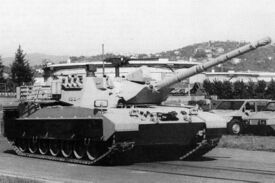
|
| SAV-11 | Main battle tank | 105 mm gun | 1965-1994 | Remains in foreign service | 
|
| SAV-12 | Main battle tank | 105 mm gun | 1989-present | 
|
APCs and IFVs
Early tanks and infantry carriers were sometimes indistinguishable, but the SIAV-1, licensed from Burgundie was considered different enough from a tank to warrant the creation of the Standard Infantry Armored Vehicle designation within the Royal and Imperial Army's standardization system. Initially intended as a complete delivery system for combat operations - including infantry transport and artillery support - artillery was dropped from the SIAV line vehicles after the SIAV-1 as military thinking came closer to modern thought in regards to armored personnel carriers. The first SIAV with true military significance was the SIAV-4; the SIAV-1 and its immediate successors were mostly relegated to experimental operations outside of key theaters.
| Tank name | Type | Armament | Years in service | Notes | Picture |
|---|---|---|---|---|---|
| SIAV-1 | Armored fighting vehicle | 1x .324 Royal machine gun | 1925-1927 | Licensed from Burgundie | 
|
| SIAV-4 | Armored personnel carrier
Half track |
1x .324 Royal machine gun | 1934-1960 | 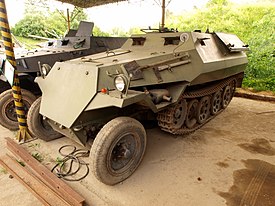
|
Other
Aircraft
Fighters
| Aircraft name | Branches | Years in service | Notes | Picture |
|---|---|---|---|---|
| SPV-1 | Royal Army, Royal Air Fleet | 1914-1918 | 
| |
| SPV-2 | Royal Army, Royal Air Fleet | 1917-1923 | 
| |
| SPV-61 | Royal Air Force, Roval Navy | 1961-1993 | 
|
Bombers
Attack aircraft
Prior to the realization of the impact of air power on naval warfare at the Battle of the Adonáire Strait in 1935, Urcea employed a number of airplanes designed exclusively for scouting and spotting information for the Royal Navy's capital ships. The Canaery-class aircraft carrier was, consequently, designed to carry a large number of these small yet nimble scouting planes which had virtually no armament but carried photographic equipment. Following the battle, virtually all naval scout planes were retired and placed with purpose-built naval fighters and bombers. Some reconnaissance planes were also used in small numbers by the Royal and Imperial Army in the first years of the Second Great War, but their use was phased out by late 1933. Of the three, the SSV-2 were built in the greatest numbers, and their larger size made them the only planes that could be jury-rigged for weapons during the Battle of the Adonáire Strait. The SSV-3 was the first monoplane in service in any branch of the Armed Forces of the Apostolic Kingdom of Urcea.
| Aircraft name | Branches | Years in service | Notes | Picture |
|---|---|---|---|---|
| SSV-1 | Royal Navy, Royal and Imperial Army | 1927-1933 | 
| |
| SSV-2 | Royal Navy | 1930-1936 | 
| |
| SSV-3 | Royal Navy | 1933-1936 | 
|
Helicopters
Tilt-rotors
Transports
| Aircraft type name | Number constructed | Years in commission | Notes | Picture |
|---|---|---|---|---|
| STV-224 | 4,887 | 1991-present | Other variants exist as different types of auxiliary aircraft | 
|
Auxiliary aircraft
Airships
Battleships
| Ship class name | Number constructed | Years in commission | Notes | Picture |
|---|---|---|---|---|
| Julian-class battleship | 2 | 1904-1930 | One ship, the HMCMS Valcum, was sold to Burgundie for use as a | 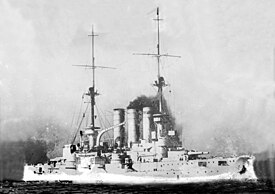
|
| Archduchy-class battleship | 6 | 1909-1953 | One ship, the HMCMS Star of the Sea, was sold to Burgundie for use as a
prison hulk |

|
| Restoration-class battleship | 2 | 1915-1936 | Both ships were converted into Victory-class aircraft carriers in 1936 | 
|
| Ardri-class battleship | 13 | 1920-1953 | 
| |
| Leo the Great-class battleship | 15 | 1934-1960 | 
| |
| Abylf Steppe-class battleship | 4 | 1939-1967 | Twelve ships were planned but most were canceled in favor of the Apostolic King-class. | 
|
| Apostolic King-class battleship | 18 | 1941-2011 | Final battleship produced for the Royal Navy. | 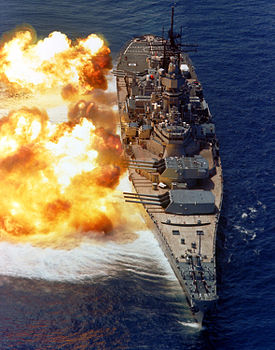
|
Aircraft carriers
| Ship class name | Number constructed | Years in commission | Notes | Picture |
|---|---|---|---|---|
| Canaery-class aircraft carrier | 7 | 1927-1939 | One ship, the HMCMS Arelate remained in service until 1947 as a training ship; three carriers were transferred to the Navy of Burgundie Only two were intended, but the escalation leading towards the Second Great War lead to more being ordered |

|
| Victory-class aircraft carrier | 2 | 1936-1961 | The Victory class ships were both converted Restoration-class battleships | 
|
| Gabban-class aircraft carrier | 5 | 1936-1957 | The Gabban class ships were all converted Apostle-class cruisers | 
|
| Erenion-class aircraft carrier | 8 | 1958-2011 | 
| |
| Elector-class aircraft carrier | 29 | 1977-present | 
| |
| Adjudicator-class aircraft carrier | 23 | 2011-present | 
| |
| Indefatigable-class aircraft carrier | 2 | 2023-present | File:Indefatigable.jpg |
Cruisers
| Ship class name | Number constructed | Years in commission | Notes | Picture |
|---|---|---|---|---|
| Coria-class cruiser | 43 | 1908-1939 | 
| |
| Glens Falls-class cruiser | 37 | 1912-1945 | 
| |
| Apostle-class cruiser | 21 | 1916-1953 | 
| |
| Roscampus-class cruiser | 73 | 1966-present | Most were replaced by Cape class cruisers in the 1990s; only 18 still in active use | 
|
| Callan-class cruiser | 98 | 1974-present | Most were replaced by Cape class cruisers in the 1990s; only 27 still in active use | 
|
| Cape-class cruiser | 234 | 1983-present | 
|
Destroyers
| Ship class name | Number constructed | Years in commission | Notes | Picture |
|---|---|---|---|---|
| Halfway-class destroyer | 408 | 1991-present | 
|
Destroyer Escorts
Destroyer escorts were a type of smaller ships which could achieve 20 knots and were primarily designed for anti-submarine warfare and convoy escort during the Second Great War. Their small size and relative simplicity of design allowed for them to be produced in large numbers.
| Ship class name | Number constructed | Years in commission | Notes | Picture |
|---|---|---|---|---|
| Creagmer-class destroyer escort | 198 | 1934-1964 | Large numbers of these ships were transferred to allied nations during the Second Great War
and afterwards; only a handful remained in Urcean service past 1953 |

|